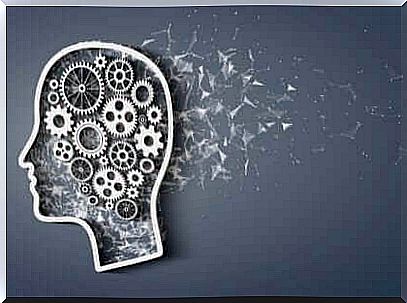The Intelligence Quotient And Its Evolution

The intelligence quotient (IQ) is a quantitative or statistical representation of the score obtained through a standardized test. This score is widely used, as it allows to compare the intellectual abilities of an individual with the average score obtained from a sample of “similar” people (usually of the same age group).
In other words, it allows to evaluate whether the intelligence of a person, expressed by the score, is higher or lower than the average, or the score typically obtained by people belonging to the same group.
The origins of the IQ
In 1884, the British scientist Francis Galton decided to evaluate a large number of people in an attempt to devise an intelligence test. His evaluation included multiple parameters, from measuring head size to individual reaction times.
Galton contributed, by various methods, to the systematic classification of physical, physiological and intellectual characteristics. According to the British scientist, a large number of human trait measurements could be meaningfully described and synthesized using two numbers:
- The central value of the distribution (the median).
- The dispersion of the scores with respect to that mean value (the standard deviation) (1).
Another figure to remember when measuring IQ is Charles Spearman, a British psychologist. It is his idea that all aspects of intelligence are interrelated. This view is very important because it laid the foundation for the expression of IQ (1).

The first intelligence tests and the birth of the IQ score
The modern era of intelligence testing began in the late 1800s. Alfred Binet and Theodore Simone set out to develop a method for identifying substantial differences in children’s intelligence.
The principle was to distinguish who could be considered cognitively able to benefit from education from those who, having intellectual difficulties, required a special educational program (1).
According to this method, the child’s performance could be measured as a quotient between the score obtained and the age at which an average child was able to achieve the same score. The publication of the Binet scale and the research of Stern, a German psychologist, paved the way for the concept of mental age.
Mental age and IQ
A mental age of 8 means that the child, regardless of his actual age, performs on a given task equal to that of an “average” 8-year-old. This concept led to the creation of the IQ score to represent the proportion of the mean age divided by the chronological age.
In short, by dividing mental age by chronological age and multiplying it by 100, the IQ or IQ score was obtained.
In 1910 Henry Goddard, principal of a New Jersey school for the cognitively disabled, pioneered IQ testing in the United States. However, to see the IQ score included in the US intelligence tests it will be necessary to wait until 1916. In that year Lewis Terman translated the Binet-Simon test, updating it with the new Stanford-Binet test.
During World War I, the US military developed Alpha and Beta tests. The purpose of these tests was to assign positions to soldiers based on their intellectual abilities. Or exclude those who were thought intellectually unfit for military service.
Around that time, David Wechsler, holding the position of military psychologist, performed a series of psychological tests on subjects who had failed the performance scale required by the military. (3).

Wechsler’s tests and IQ score
In 1932 Wechsler was appointed psychologist in charge of Bellevue Psychiatric Hospital in New York. From that moment it began to be thought that a modification in the calculation of the intelligence quotient was necessary.
As a result, the IQ value was changed to a standard score (3) which allows it to be used throughout life (4).
Verbal IQ and performance IQ
Form 1 Wechsler-Bellevue was published in 1939. It consisted of a measure of intelligence based on the sum of scores from various secondary tests. In addition to a composite summary dubbed Full Scale IQ, Wechsler was convinced that intelligence could be measured more accurately by dividing secondary tests. Like?
The secondary tests could be divided into two groups: those that mainly reflect verbal skills and those that express non-verbal or performance intelligence. The verbal IQ score and the performance IQ score were presented.
Wechsler’s tests and cues for describing intelligence met with great success. Later the American psychologist developed an adult test, the WAIS (Wechsler 1955). It was a direct derivation of the Wechsler-Bellevue test and also of the children’s version (WISC) published in 1949.
Currently, these tests are often used to measure intelligence in a similar way to how a tape measure would be used to measure the length of a table.
However, the question arises: does an IQ score truly and accurately represent a subject’s intelligence? Apparently both the concepts of IQ and intelligence are evolving and with them the method of evaluating them must also evolve.









